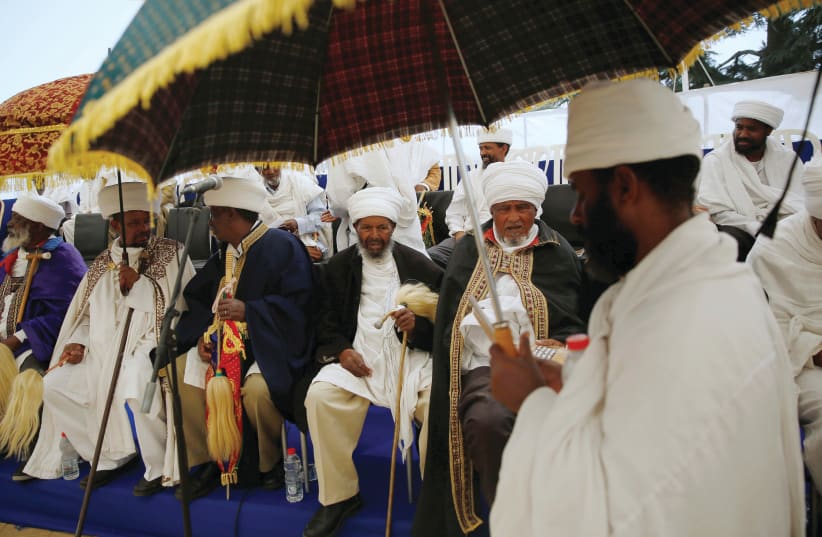Once they had arrived, however, the story of their experiences is not so heartening. They were not instantly gathered into the bosom of the nation but were treated rather as a unique minority, and suffered a fair degree of social discrimination. Over time, the situation has improved, and many Ethiopian Jews have made their way into mainstream Israeli society, serving in the military and police and carving out successful careers in politics, sports and entertainment. However, despite extensive financial investment in the community, socioeconomic gaps between Ethiopian Israelis and the general population persist, and activists within the community continue to protest anti-Ethiopian racism within general society, and discrimination by officialdom and the police.
Where better to start to change such attitudes than with the children of this generation? Rabbi Barry L. Schwartz undertakes this eminently worthwhile task in The New Queen of Sheba, a book for youngsters approximately four to eight years old. He succeeds admirably by combining a variety of elements into a wholly delightful and colorful volume. It will delight any child with the tale it has to tell and the pictures on every page that illustrates it.
Through the eyes of little Malka, Schwartz recounts the excitement of anticipating the journey to Israel, and then seeing the plane with the Magen David on its tail. Woven into the text is the task the children were given while awaiting their rescue. They were all asked to draw a picture based upon their Hebrew name, which their mothers would use to embroider a pillow for each of them. As the back cover informs us, the embroidery art of the Ethiopian Jewish community is stunning. Each of those designs forms one of the pictures in the book.
These are some of the elements that Schwartz weaves together in creating his story. Another that will certainly appeal strongly to youngsters is the page devoted to the riddles that Malka tells her friends on the long trek to the rescue plane.
And the book’s title – how does that come about?
All Malka’s friends give their teacher, their kes, their Hebrew names – such as Avraham and Devorah and Jonah and Rivkah – and each is told something about the biblical character they are named after. Then it is Malka’s turn, and she is sad. “I’m not named after anyone,” she says.
The kes disagrees. “You have the most beautiful story of all.”
And he tells the class how the Queen of Sheba sailed all the way from Africa to visit King Solomon in the Holy Land and tested his wisdom.
“After giving and receiving many gifts,” said the kes, “the queen came back here. She is the mother of all of us Beita Yisrael.”
And indeed Ethiopian tradition has it that a son, Menelik, was born to Solomon and Sheba, through whom all Ethiopian Jews descended.
If The New Queen of Sheba is to play a part in breaking down the walls of discrimination, and engendering an open-hearted acceptance of this segment of the Jewish nation, it will have to reach not only English-speaking children in the Anglo world, but the children of Israel itself whose mother tongue is Hebrew. The publishers, aware of this, plan to issue a Hebrew version before too long.
Meanwhile The New Queen of Sheba is a book to delight any child, while also providing a good grounding in the story of the Ethiopian Jews and how they came to Israel, and an idea of the truly beautiful embroidery skills they brought with them. It is calculated also to generate an understanding of this branch of the Jewish family and lay the foundations for a happier future for them in their promised land.
THE NEW QUEEN OF SHEBA
By Rabbi Barry L. Schwartz
Gefen Publishing
32 pages (with illustrations); $10.95
